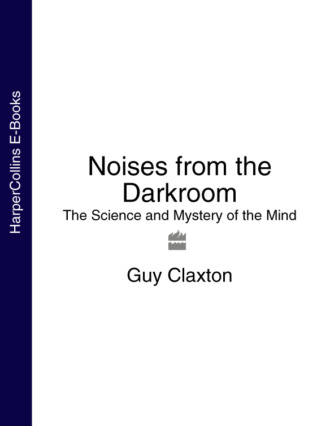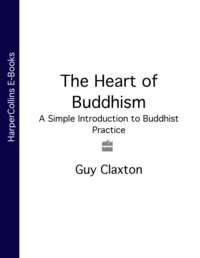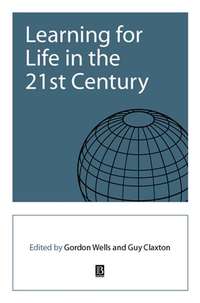
Полная версия
Noises from the Darkroom: The Science and Mystery of the Mind
What is Evolution?
It will be obvious that I am assuming the general validity of an enlightened neo-Darwinian view of evolution. There may have been a few amino acids or simple proteins that arrived on the earth via meteorites, and these may even have helped to kick-start the evolution of self-replicating molecules. But within a scientific context we are not yet obliged to take seriously such imaginative fancies as the arrival of fully-fledged life-forms from other planets, or the guiding hand of a Cosmic Architect in whose eyes humanity is the highest pinnacle of Creation. To a shark, a beaver, a cockroach or a bacterium, it must also look as if they are the target towards which evolution has been unerringly aimed, and the species for whom the world has been designed.
The increasing complexity of the living world is real enough, but any ‘intention’, any overall ‘design’ or ‘purpose’, can only be conceived, and projected backwards into history, with the benefit of hindsight. We can say, in general, that it is in the nature of a world that contains self-replicating entities subject to the developmental constraints of natural selection, that things are going to diversify, become more intricate, colonize more inhospitable habitats, and develop greater flexibility in the face of environmental change; but how that is going to pan out would be in (if there were any) the laps of the Gods. As Graham Cairns-Smith puts it: ‘What does happen in evolution depends so much on particular circumstances that the course of evolution over the long term is about as predictable as the meandering form of a river or the exact shape of tomorrow’s clouds: one can only illustrate possibilities and indicate general expectations.’8
The course of true love between species and habitat never runs smooth for very long, however, because the incumbents themselves are changing the environment – using up resources, creating waste, building nests or commuter towns. And other tribes or other species are learning new tricks that will keep you on your evolutionary toes. Gradual changes of cooling or warming are happening on a local or a planetary scale. Huge lumps of flying rock – meteorites, or more likely, comet showers – occasionally land in your back garden. And so on. As Cairns-Smith goes on to say: ‘Any theory that is to explain the variety and complexity of living things must also take into account the varied and varying challenges sat up by a varied and varying environment. Nature, as breeder and show judge, is continually changing her mind about which types should be awarded first prize.’9
Another vital constraint on evolution is its inability to subtract. It is never possible for evolution to reconsider an earlier ‘decision’ in the light of subsequent experience. Each step can only modify the existing gene-pool; it can never rub it out and start again. A favourite example of Stephen Jay Gould’s is the giant panda, a beast that is evolved from carnivorous stock, yet now has a vegetarian lifestyle. The carnivore’s paw comprises five equivalent fingers or toes, and has no ‘thumb’, as the primates do, which can move independently of the fingers to provide a powerful grasp or a precise grip. Yet this is just what the panda now needs; its diet requires it constantly to strip the leaves from young bamboo shoots – a job for which an opposable thumb would have been ideal. Trapped by its pre-set evolutionary trajectory, the best the panda can do is develop a clumsy pseudo-thumb out of one of its fingers. As Gould says: ‘If God had started from scratch to construct a panda to eat bamboo he would have built it differently…The world is full of these imperfections, and they record the path of history’.10
Just as the path of evolution is littered with these awkwardnesses, so is it full of serendipity. Structures, faculties and behaviours arise as an ‘answer’ to a local ‘question’, and then may turn out to have more potential than met the original eye – or, to take a different sense, the tongue. This may have originally evolved as part of the drinking mechanism, as a device for moving food around in the mouth, as the prime site of the taste buds, or as part of the apparatus for making sure that the intake of food and air do not get muddled up. It probably did not originally develop as part of the Fur Insulation System of the ancestors of the cat family. Yet, once in existence, it came, opportunistically, to play an important role in keeping the fur clean. Dirty, matted fur insulated much less well, and the job of keeping it clean may well have stimulated the tongue to become rougher, in order to make a better brush. But such a development would have only have been ‘allowed’ to the extent that it enabled the tongue to continue to play its role as part of the Food Processing System.11
Other species have capitalized on the tongue in different ways. Dogs use it to help reduce body heat by panting, while human beings, in certain cultures, use it for exactly the reverse purpose – as an essential component of the Sexual Arousal System. Not to mention the fact that without it we would all be speaking in sign language, and there would be no singing. As I shall argue later, we can only understand the evolution of consciousness if we look at it in the same way. What it is and what it does now have to preserve the function for which it was first evolved. But there have been so many twists and turns to the evolutionary tale since then that this original function has become quite obscured by later developments.
Contrary to popular belief, natural selection does not pit every individual against each other in a ‘Nature red in tooth and claw’ kind of way. If cooperation helps individuals to stay alive long enough to breed, and to increase the chances of their genes, through their offspring, surviving, well and good. Neo-Darwinism is quite at home with the principle of enlightened self-interest; in fact co-operation and collaboration both within and between species are turning out to be the rule rather than the exception. Sophisticated flowers make nectar for the bees, but they also make sure that their visitors leave with a good blob of pollen on their backsides. Big fish allow little fish to clear up their leftovers (without the tiddlers fearing that they themselves are on the menu) provided they floss their host’s teeth while they are about it.
The balance between ‘selfish’ and ‘altruistic’ behaviour emerges as a pragmatic issue of genetic survival long before it surfaces as a moral question or a cultural concern. Indeed there may still be within human beings a biological morality which we have, in our enchantment with consciousness and spoken language, forgotten; which our explicit ethical codes are a poor substitute for; and which it might be possible, if we were to relocate our personal centres of gravity, to re-experience. At the very least the neo-Darwinian theory of evolution advises us to keep this an open question.
Конец ознакомительного фрагмента.
Текст предоставлен ООО «ЛитРес».
Прочитайте эту книгу целиком, купив полную легальную версию на ЛитРес.
Безопасно оплатить книгу можно банковской картой Visa, MasterCard, Maestro, со счета мобильного телефона, с платежного терминала, в салоне МТС или Связной, через PayPal, WebMoney, Яндекс.Деньги, QIWI Кошелек, бонусными картами или другим удобным Вам способом.






